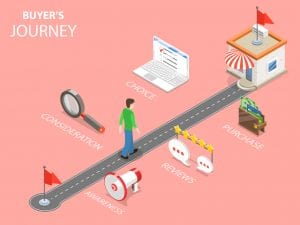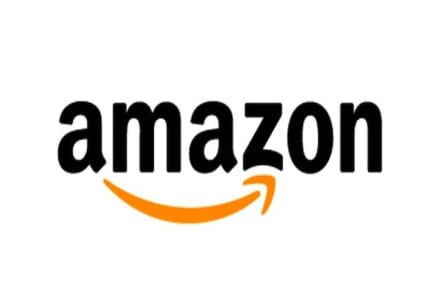Staying current on recent marketing trends is an excellent way to reflect and verify whether your marketing efforts are harmonious with what’s going on in today’s ever-evolving marketplace. We’re aware that keeping up with these trends can often be difficult given the abundance of information thrown at us every day. The following articles come from popular marketing blogs. They highlight current marketing trends that we think are worth paying attention to:
Noteworthy Marketing News
Spotify tests interactive ads that listen for your voice
Spotify is testing interactive ads that can be controlled by users voices. The idea allows a user to say “play now” when hearing a voice controlled ad, which would then take them to the piece of relevant content. Two ads are currently running, one for Unilever’s Axe products and the other for a Spotify podcast called Stay Free: The Story of the Clash. Saying the key phrase during whichever ad is playing will direct you to an Axe-branded playlist or to the advertised podcast. This is just one way digital content allows for the development of new ways for consumers to interact with advertising content. You can read more about this story on The Verge.
LinkedIn refreshes Sales Navigator homepage to put focus on alerts
This is a change to increase Ease of Access when using LinkedIn Sales Navigator. The big news with this latest update to the Sales Navigator platform is that the homepage shift. It is transforming from a newsfeed format to focus on alerts. Knowing the full-breadth of features offered by LinkedIn Sales Navigator helps marketing teams contribute added value to their sales organization. These insights allow companies to take full advantage of their social media advertising platform and investment. Learn more about this update at Martech Today.
Facebook is getting a redesign
The main takeaway from the new Facebook redesign is that groups will continue to dominate the Facebook marketing space. This is an interesting redesign that comes off the heels of Facebook CEO Mark Zuckerberg announcing how a lot of users have started using groups and more private ways for sharing content.
Social Report writes, “But this is no new trend. We’ve been huge proponents of Facebook groups since Facebook changed its algorithm to prioritize content from groups and other “content that matters” on the Newsfeed last year.When Facebook changed its algorithm, it plummeted organic reach for Facebook pages. At the same time, however, Facebook gave groups more organic reach—even if they’re run by a brand. This groups-focused redesign shows us that Facebook is continuing its commitment to Facebook groups, and that we’ll continue to see the platform prioritize content from them indefinitely”.
Improving Your Marketing Program
Developing the Perfect Omni-Channel Marketing Strategy
The buyer’s journey has changed a lot over the years. This is a result of the consumer’s ability to explore multiple channels online and to engage in multiple ways. There is no distinct path that takes them from point A to point B in order to make a purchase. While one customer might begin doing research through a search engine like Google, another might ask their followers questions on social media to identify solutions to their problems, while yet another might stumble on an ad for one of your products in a magazine. Basically, every buyer’s journey is unique.
As such, it’s important that you have a presence on multiple channels. You should integrate all of your channels, processes, and strategies to help nurture any stage of their buyer’s journey. This is omni-channel marketing. The following are a number of tips that you should consider implementing that will help you strengthen your omni-channel marketing strategy.
Factors That Influence Consumer Purchasing Decisions: Rethinking the Marketing Funnel
In order to continue attracting your target audience, you need to keep up with the wants and needs of customers. This can be a real challenge if you don’t understand the factors that influence consumer purchasing decisions. Those factors are a lot different than what they used to be, which means that the customer journey has changed a lot as well. This updated journey is referred to by many as the consumer decision journey (CDJ). What makes the CDJ so different than traditional marketing funnels is that each consumer’s CDJ is unique. Keeping that in mind, the following are three of the biggest factors that influence consumer purchasing decisions in today’s digital age.
How to Outshine Your Competition with Effective E-Commerce Website Marketing
While not all businesses have an e-commerce page, many do. If you’re selling products or services online, make sure you have an e-commerce marketing strategy in place. If you don’t, it’s going to be difficult to stand out from all the other e-commerce sites out there. Through the use of digital marketing strategies, you can build awareness of your e-commerce page to generate more traffic. Thereby, you can improve your chances of closing sales. The following are a number of e-commerce marketing tips that will help you do just that.
Recent Marketing Reports, Updates, and Trends
Mobile to become the preferred platform for video ads by end of 2019
A new report from PubMatic stated nearly 50% of video ads were viewed on mobile devices0. That is up from from 40% in 2018. Video ads are expected to exceed $29 Billion globally according to this same report. This trend follows the amount of content being consumed on mobile devices versus any other device. With 5G on the horizon, content accessibility will only drive increased impressions and ad dollars. More about this story can be found on Marketing Land.
Universal Measurement Standard for video
For years, media companies have tried to develop a universal standard that allows advertisers to compare video metrics across all visual media. The Media Rating Council is getting closer to implementing a single standard for measuring video across all platforms. A standard metric allows marketers to have an effective tool to independently prove how effective ad performance.
Sarah Fisher from Axios writes, “Last week, the MRC finished collecting dozens of comments in response to its long-awaited draft proposal for the new cross-media audience measurement standard, which imposes stricter rules for digital companies reporting video impressions and stricter rules for how TV report commercial viewership.”
Time spent on Facebook, Snapchat remains flat, but Instagram sees growth
A recent study from eMarketer looked at some of the key players in social media. It’s findings offer an interesting glimpse into what 2019 holds for Facebook, Snapchat, and Instagram. eMarketer reports the average amount of time people will spend each day on Facebook this year will remain unchanged from last year at 38-minutes. That number is expected to drop to 37-minutes per day by next year. This is a downgrade from the figures eMarketer released during the third quarter of 2018.
Overall, eMarketer reports the average amount of time people spent per day on social networks in the U.S. dropped by nearly 1.5 minutes last year. That number will remain “virtually” unchanged this year according to eMarketer’s forecasts. Learn more about this study at Marketing Land.


















 The “new-to-brand” set of metrics are aimed to help brands understand how well their campaigns convert first-time buyers.
The “new-to-brand” set of metrics are aimed to help brands understand how well their campaigns convert first-time buyers. 






 Recently, Nielsen announced that it will acquire Sorensen Media as a a means of providing an all-encompassing addressable TV ad delivery solution. Addressable TV advertising allows marketers to “address” specific consumers with customized advertising messages. By the year 2023, it’s estimated nearly 250 million Smart TVs with addressable capabilities are expected in the market. As read in Marketing Land, Nielsen plans to combine Sorensen Media’s addressable TV platform with its Gracenote automatic content recognition (ACR) technology to “help deliver on the promise of
Recently, Nielsen announced that it will acquire Sorensen Media as a a means of providing an all-encompassing addressable TV ad delivery solution. Addressable TV advertising allows marketers to “address” specific consumers with customized advertising messages. By the year 2023, it’s estimated nearly 250 million Smart TVs with addressable capabilities are expected in the market. As read in Marketing Land, Nielsen plans to combine Sorensen Media’s addressable TV platform with its Gracenote automatic content recognition (ACR) technology to “help deliver on the promise of 

 The Top Integrated Marketing Company List
The Top Integrated Marketing Company List


